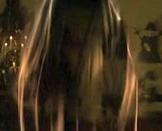Auditing has developed from what, in the twelfth century, was primarily a check of the accounting for stocks and revenues by authorised officers of the Exchequer of England, into a sophisticated professional assurance service performed by independent accountants for the interests of their clients and other users of financial information . But what motivates people to enlist the services of an auditor? In explaining why the demand for the auditor is so varied, the academic Wallace identified a three tier hypotheses of Stewardship, Information and Insurance. Thus viewing the audit in the modern day business arena, as offering protection of integrity to the Director, a conduit to information for users of financial statements and a degree of insurance to shareholders and creditors. Professor David Tweedie, delivering a paper at University College, felt that the needs of an audit to the user, encompassed an even greater range of requirements:
"The public appear to require
1) A burglar alarm system - (protection against fraud)....
2) A radar station - (early warning of future insolvency)....
3) A safety net - (general re-assurance of financial well-being)....
4) An independent auditor - (safeguards for auditor independence)....
5) Coherent communications - (understanding of audit reports)....
He went on to say:
"Given these concerns, it is clear that the basic tenets of an audit are being mis-understood."
It is clear that users of the audit depend on the integrity and professionalism of auditors; but unexpected company collapses in recent years and scandals surrounding companies such as Enron, and more recently Fannie Mae, have resulted in public confidence in the profession being at its lowest ebb historically. The credibility of external auditors is increasingly being called into question, as evidenced by widespread press criticism and litigation against auditors. Research undertaken to identify the basis of this criticism shows...


